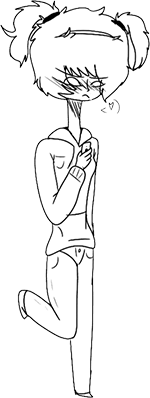Exercise and Physical Activity
Doing regular physical activity can make you feel good about yourself and it can have a number of benefits for your health. For example, it reduces the risk of developing heart disease, stroke, high blood pressure, many cancers, type 2 diabetes and ‘thinning’ of the bones (osteoporosis).
To stay healthy or improve health, adults need to do 2 types of physical activity each week: aerobic and strength exercises.
WHAT COUNTS AS PHYSICAL ACTIVITY?
Physical activity is any activity that you may do that helps to improve or maintain your physical fitness, as well as your general health.
It may include:
- Everyday activities. For example, walking or cycling to work or school, doing housework, gardening, DIY around the house, or any active or manual work that you may do as part of your job.
- Active recreational activities. This includes activities such as dancing, active play amongst children, or walking or cycling for recreation.
- Sport. For example, exercise and fitness training at a gym or during an exercise class, swimming and competitive sports such as football, rugby and tennis, etc.
HOW MUCH PHYSICAL ACTIVITY SHOULD I BE DOING?
How much physical activity you need to do each week depends on your age. Generally speaking, to stay healthy, adults aged 19 – 64 should try to be active daily and should do:
- at least 150 minutes of moderate aerobic activity such as cycling or brisk walking every week and
- strength exercises on 2 or more days a week that work all the major muscle groups
Or:
- 75 minutes of vigorous aerobic activity such as running or a game of singles tennis every week and
- strength exercises on 2 or more days a week that work all the major muscle groups
Or:
- a mix of moderate and vigorous aerobic activity every week – for example, 2 x 30-minute runs plus 30 minutes of brisk walking equates to 150 minutes of moderate aerobic activity and
- strength exercises on 2 or more days a week that work all the major muscle groups
A good rule is that 1 minute of vigorous activity provides the same health benefits as 2 minutes of moderate activity.
All adults should also break up long periods of sitting with light activity, so whether you’re sat at a desk all day or you’re just about to take on the final boss fight, make sure you give yourself an adequate break to stretch your legs.
TIPS TO INCREASE YOUR PHYSICAL ACTIVITY LEVELS
Physical activity is not just for young sporty types! In fact, it’s never too late to start to gain the benefits, no matter how old or unfit you are.
Here’s 5 useful tips to consider when increasing your physical activity levels:
- if you’re not used to physical activity, it is best to gradually build up the level of activity. Brisk walking is a great activity to start with, begin with 10 minutes and over time build it up to 30 minutes
- set yourself an achievable goal, like walking briskly for 10 minutes a day every day for two weeks, then treating yourself when you achieve it
- use everyday activities as part of your physical activity programme! Take the stairs in the office and not the lift or take a brisk walk to work instead of driving or catching the bus
- remember to include some muscle strengthening exercises in your programme too
- don’t forget to talk to your doctor or practice nurse about any groups of initiatives in your local area
